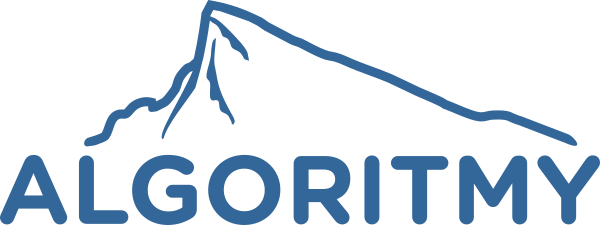Graph-Laplacian in biodiversity modelling by Natural Numerical Networks
Main Article Content
Abstract
This paper explores the graph-Laplacian operator and its application in image classification tasks, focusing on its effectiveness in capturing local variation and structural properties of data. We investigate its mathematical formulation, practical implementation, and usability in biodiversity modelling, extending Laplace operator application from the physical domain to graph structures. Our research proposes a novel methodology for identifying and classifying natural riparian forests with high biodiversity value from optical satellite imagery. We combine graph-Laplacian analysis with relevancy maps generated by the Natural Numerical Network to distinguish between natural and planted riparian forests. Furthermore, we explore graph-Laplacian as a statistical characteristic of Sentinel-2 optical bands in constructing the Natural Numerical Network. Numerical experiments and case studies highlight the applicability of the graph-Laplacian operator in environmental science, describing its potential in biodiversity modelling and protected habitat identification.
Article Details
How to Cite
Ožvat, A., Kollár, M., Šibíková, M., & Mikula, K.
(2024).
Graph-Laplacian in biodiversity modelling by Natural Numerical Networks.
Proceedings Of The Conference Algoritmy, , 204 - 213.
Retrieved from http://www.iam.fmph.uniba.sk/amuc/ojs/index.php/algoritmy/article/view/2174/1042
Section
Articles
References
[1] Bang-Jensen, J., Gutin, G.R.: Digraphs: Theory, Algorithms and Applications. Springer-Verlag London, 2st edn. (2010)
[2] Böhm, J.N., Berens, P., Kobak, D.: Attraction-repulsion spectrum in neighbor embeddings. Journal of Machine Learning Research 23(95), 1–32 (2022)
[3] Chang, B., Meng, L., Haber, E., Ruthotto, L., Begert, D., Holtham, E.: Reversible architectures for arbitrarily deep residual neural networks. In: 32nd AAAI Conference on Artificial Intelligence, AAAI 2018. vol. 32, pp. 2811–2818 (04 2018), https://ojs.aaai.org/index.php/AAAI/article/view/11668
[4] European Environmental Agency: The natura 2000 protected areas network. https://www.eea.europa.eu/themes/biodiversity/natura-2000/the-natura-2000-protected-areas-network (2024)
[5] European Space Agency: Sentinel 2. https://sentinel.esa.int/web/sentinel/missions/sentinel-2 (2024)
[6] Friedman, J., Tillich, J.P.: Calculus on graphs. CoRR cs.DM/0408028 (2004)
[7] Haber, E., Ruthotto, L.: Stable architectures for deep neural networks. Inverse Problems 34(1) (2018). https://doi.org/10.1088/1361-6420/aa9a90
[8] Mikula, K., Kollár, M., Ožvat, A.A., Ambroz, M., Čahojová, L., Jarolı́mek, I., Šibı́k, J., Šibı́ková, M.: Natural numerical networks for natura 2000 habitats classification by satellite images. Applied Mathematical Modelling 116, 209–235 (2023). https://doi.org/10.1016/j.apm.2022.11.021
[9] Mikula, K., Kollár, M., Ožvat, A.A., Čahojová, L., Šibı́ková, M.: Natural numerical networks on directed graphs in satellite image classification. Scale Space and Variational Methods in Computer Vision 14009, 339–351 (2023). https://doi.org/10.1007/978-3-031-31975-4
[10] Mikula, K., Ramarosy, N.: Semi-implicit finite volume scheme for solving nonlinear diffusion equations in image processing. Numerische Mathematik 89(3), 561–590 (2001)
[11] Mikula, K., Urbán, J., Kollár, M., Ambroz, M., Jarolı́mek, I., Šibik, J., Šibı́ková, M.: An automated segmentation of natura 2000 habitats from sentinel-2 optical data. Discrete and Continuous Dynamical Systems - Series S 14(3), 1017–1032 (2021). https://doi.org/10.3934/dcdss.2020348
[12] Mikula, K., Urbán, J., Kollár, M., Ambroz, M., Jarolı́mek, I., Šibik, J., Šibı́ková, M.: Semi-automatic segmentation of natura 2000 habitats in sentinel-2 satellite images by evolving open curves. Discrete and Continuous Dynamical Systems - Series S 14(3), 1033–1046 (2021). https://doi.org/10.3934/dcdss.2020231
[2] Böhm, J.N., Berens, P., Kobak, D.: Attraction-repulsion spectrum in neighbor embeddings. Journal of Machine Learning Research 23(95), 1–32 (2022)
[3] Chang, B., Meng, L., Haber, E., Ruthotto, L., Begert, D., Holtham, E.: Reversible architectures for arbitrarily deep residual neural networks. In: 32nd AAAI Conference on Artificial Intelligence, AAAI 2018. vol. 32, pp. 2811–2818 (04 2018), https://ojs.aaai.org/index.php/AAAI/article/view/11668
[4] European Environmental Agency: The natura 2000 protected areas network. https://www.eea.europa.eu/themes/biodiversity/natura-2000/the-natura-2000-protected-areas-network (2024)
[5] European Space Agency: Sentinel 2. https://sentinel.esa.int/web/sentinel/missions/sentinel-2 (2024)
[6] Friedman, J., Tillich, J.P.: Calculus on graphs. CoRR cs.DM/0408028 (2004)
[7] Haber, E., Ruthotto, L.: Stable architectures for deep neural networks. Inverse Problems 34(1) (2018). https://doi.org/10.1088/1361-6420/aa9a90
[8] Mikula, K., Kollár, M., Ožvat, A.A., Ambroz, M., Čahojová, L., Jarolı́mek, I., Šibı́k, J., Šibı́ková, M.: Natural numerical networks for natura 2000 habitats classification by satellite images. Applied Mathematical Modelling 116, 209–235 (2023). https://doi.org/10.1016/j.apm.2022.11.021
[9] Mikula, K., Kollár, M., Ožvat, A.A., Čahojová, L., Šibı́ková, M.: Natural numerical networks on directed graphs in satellite image classification. Scale Space and Variational Methods in Computer Vision 14009, 339–351 (2023). https://doi.org/10.1007/978-3-031-31975-4
[10] Mikula, K., Ramarosy, N.: Semi-implicit finite volume scheme for solving nonlinear diffusion equations in image processing. Numerische Mathematik 89(3), 561–590 (2001)
[11] Mikula, K., Urbán, J., Kollár, M., Ambroz, M., Jarolı́mek, I., Šibik, J., Šibı́ková, M.: An automated segmentation of natura 2000 habitats from sentinel-2 optical data. Discrete and Continuous Dynamical Systems - Series S 14(3), 1017–1032 (2021). https://doi.org/10.3934/dcdss.2020348
[12] Mikula, K., Urbán, J., Kollár, M., Ambroz, M., Jarolı́mek, I., Šibik, J., Šibı́ková, M.: Semi-automatic segmentation of natura 2000 habitats in sentinel-2 satellite images by evolving open curves. Discrete and Continuous Dynamical Systems - Series S 14(3), 1033–1046 (2021). https://doi.org/10.3934/dcdss.2020231

